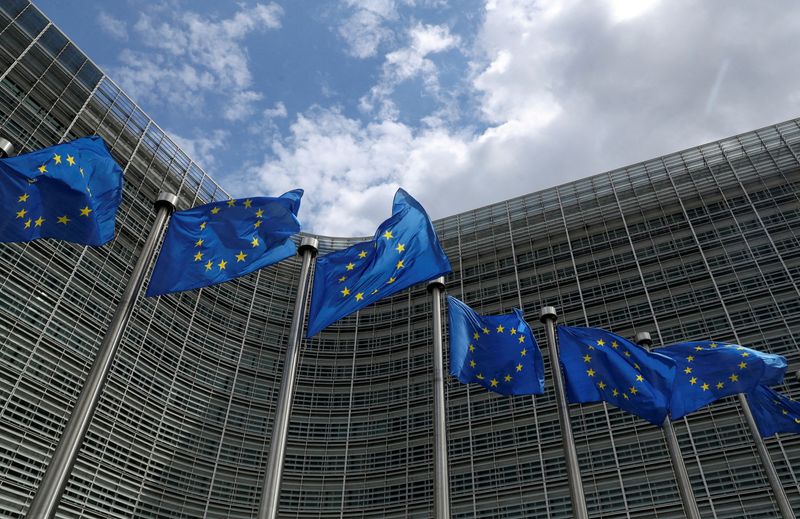
© Reuters. FILE PHOTO: European Union flags flutter outside the European Commission headquarters in Brussels, Belgium, June 5, 2020. REUTERS/Yves Herman
By Nina Chestney
LONDON (Reuters) – Emissions regulated under the European Union’s carbon market from power and industrial sectors fell by 1.2-1.6% last year, preliminary data in the European Union Transaction Log database examined by analysts showed on Monday.
About 45% of the EU’s output of greenhouse gases is regulated by the Emissions Trading System (ETS), which was designed to help reduce global warming by charging for the right to emit carbon dioxide (CO2).
Analysts at Refinitiv and ICIS said stationary emissions covered by the scheme, such as power plants and factories, totalled 1.316-1.320 billion tonnes of CO2 equivalent (CO2e) in 2022, down 1.2-1.6% from the previous year.
While power sector emissions increased, that was offset by a decline in industrial emissions.
The war in Ukraine resulted in many EU countries burning more coal for power generation as Russian gas supplies to Europe dwindled. There were also problems with French nuclear power output, requiring more power generation from fossil fuels to fill the gap.
However, high gas prices led many industrial companies to curb production.
Emissions from the aviation sector, which is also covered by the scheme, rose 77-84% last year from 2021 levels, the analysts said, as the industry started to recover from travel restrictions during the height of the COVID-19 pandemic.
Due to the rise in aviation emissions, total carbon dioxide emissions covered by the ETS inched up last year – by 0.2% from 2021 levels to 1.366 billion tonnes – according to Refinitiv gas analyst Yan Qin.
Some 93% of all installations covered by the ETS have reported their emissions so the data is incomplete.
Last week, Britain said its CO2 emissions, the main greenhouse gas, were estimated at 331.5 million tonnes, 2.4% lower than in 2021.












